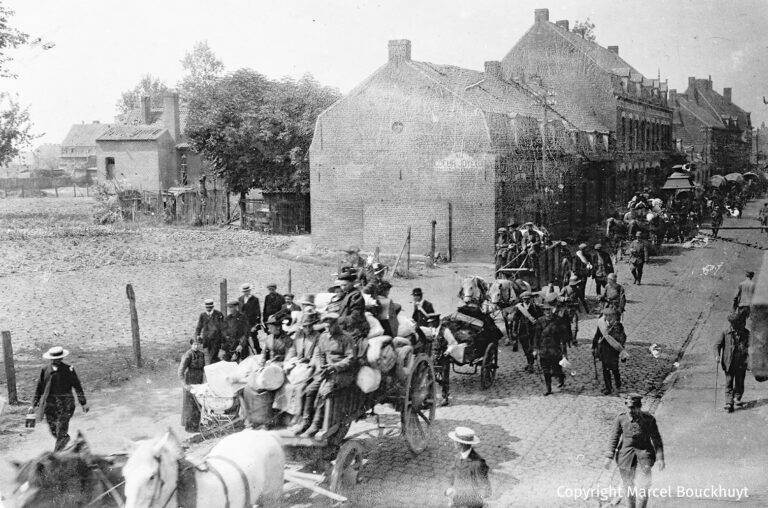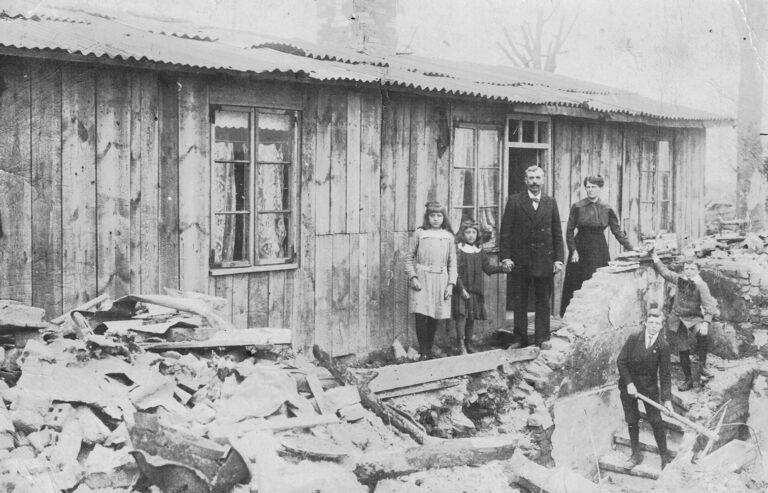Comines-Warneton in the turmoil of the First World War
A lasting memorial
The Ploegsteert Memorial to the Missing erected by Great Britain commemorates the sacrifice of more than 11,000 soldiers who died in our region and whose bodies were never found.

A region literally cut in two
During the four years of the Great War, the belligerents fought each other on both sides of the front line that divided the area in two.
A heavy toll for the civilians
Civilians were not spared.
Trapped on both sides of the front line, they had to live alongside the troops, endure the risks and consequences of bombardments, submit to the discipline imposed by the military authorities, rationing and isolation, and eventually leave their homes for a distant exile with no prospect of return.
A devastating tragedy
The fighting completely devastated our region, razing the buildings to the ground.
Even today, the ground still bears visible traces of this tragedy.

A resounding mine war
In order to capture the Messines-Wytschate salient, the artillery on both sides of the front bombarded the region for a fortnight in the spring of 1917.
On 7 June, nineteen huge mines exploded with a roar that was heard as far away as London.

In exile
This operation spurred the occupant to finally evacuate the last civilians and led to the complete destruction of the built area.

Final battles
After the evacuation, two more battles were fought in the area: the Battle of the Lys with the capture of Mount Kemmel in the spring of 1918, and the liberation offensive in late September and early October 1918.
A precarious comeback

The devastated land soon welcomed the first inhabitants returning from exile.
They took shelter in unsanitary barracks while waiting for more decent houses to be built.
Francis De Simpel





